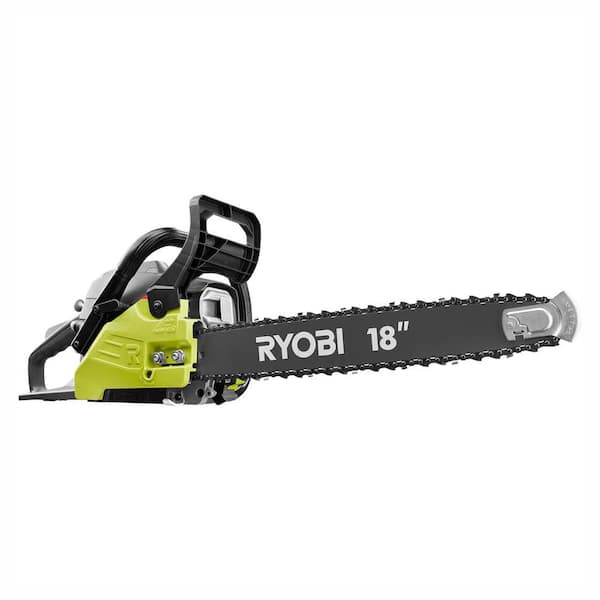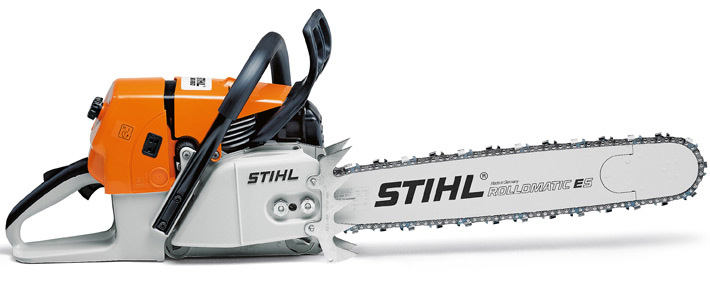What We Have Covered in This Article
Last Updated on November 18, 2024 by woodcutter
Chainsaws typically weigh between 10 and 15 pounds. Lightweight electric models can be as light as 6 pounds, while heavy-duty gas chainsaws can exceed 20 pounds.
Choosing the right chainsaw involves with its weight, especially if you plan on using it for extended periods. Homeowners and garden enthusiasts often opt for lighter chainsaws that are easier to handle and maneuver. These models facilitate routine yard work such as trimming branches or cutting small trees.
On the other hand, professionals user tend to lean towards more robust and heavier chainsaws. Their jobs require cutting through large trees or logs where the additional weight aids in the saw’s cutting power and stability. Despite the variety in weight, modern chainsaws are designed to balance power, efficiency, and ergonomics, ensuring that there’s a suitable option for every type of user, from the casual gardener to the seasoned lumberjack.

Calculate Chainsaw Weight Factors
Understanding how heavy a chainsaw is can impact your decision when purchasing. The weight will affect your comfort and endurance during use. Let’s look at what contributes to a chainsaw’s heft.
Engine Type Impact
The engine type plays a significant role in the weight of a chainsaw. Chainsaws come with two main engine types:
- Electric engines, which are typically lighter and range from 5 to 15 pounds.
- Gas-powered engines, with a heftier weight ranging from 10 to over 20 pounds for larger models.
Material And Build
The materials used in a chainsaw’s construction have a direct impact on its weight. Lightweight materials like plastic and aluminum keep the saw manageable. Here are common material choices:
| Component | Material Options | Weight Influence |
|---|---|---|
| Body | Plastic, Aluminum, Magnesium | Light to Moderate |
| Guide Bar | Steel, Laminated Metals | Moderate |
| Chain | Steel Alloys | Moderate to Heavy |
Additionally, chainsaws with a sturdy build can add weight but also offer longevity and durability. Balancing these factors is essential for finding the ideal chainsaw weight for your needs.

Typical Weight Range By Category
Understanding the weight of chainsaws helps you choose the right one for your needs. Different chainsaws have various weights. It depends on their design and what they are for. Let’s explore the typical weight ranges for different categories of chainsaws.
Electric Chainsaw Stats
Electric chainsaws are known for their lightweight and convenient design. They are perfect for home use. Most weigh between 5 to 15 pounds (2.3 to 6.8 kg). Their weight makes them easy to handle for routine yard tasks. Here, the ease of use is a key advantage, especially for users not accustomed to heavier saws.
Gas-powered Models
- Light-duty saws: around 10 pounds (4.5 kg).
- Mid-range saws: 10 to 15 pounds (4.5 to 6.8 kg).
- Heavy-duty saws: over 15 pounds (6.8 kg).
Gas-powered chainsaws are heavier and more robust than electric ones. They are suitable for cutting larger trees and frequent use. Yet, with more power comes more weight. Handling them requires more strength and stamina.
Professional-grade Insights
| Type | Weight Range |
|---|---|
| Standard | 13 to 15 pounds (5.9 to 6.8 kg) |
| Heavy-duty | 15 to 25 pounds (6.8 to 11.3 kg) |
Professional chainsaws are robust, powerful, and heavy. They are designed for all-day use in tough environments. Pros need saws that can take on large trees and hardwood. Yet, these saws are the heaviest, designed for those with experience.
Ergonomics And Handling
Ergonomics and handling deal with the design aspect of chainsaws, emphasizing user comfort and control. These factors are crucial as they directly affect a user’s ability to work with a chainsaw for extended periods without fatigue. It’s important to consider how the chainsaw balances in hand, along with its weight, to get the job done efficiently and safely.
Balancing Weight For Comfort
The right chainsaw feels like an extension of your arm. Balance is key. A well-balanced chainsaw distributes weight evenly between the front and back. This balance minimizes strain on your arms and back. Manufacturers design chainsaws with different weight distributions to ensure that users can handle them with maximum comfort. Look for features like anti-vibration systems and ergonomic handles that contribute to better balance and comfort.
Impact Of Weight On Usage Duration
Chainsaw weight plays a pivotal role in how long you can use the tool without a break. Heavier chainsaws can lead to quick fatigue, reducing work duration. Lighter models, however, enable longer usage times but might lack the power for heavy-duty tasks. Manufacturers often offer a range of weights to suit different tasks, from lightweight electric models to heavier gas-powered ones. Choose based on your physical comfort and the job’s requirements.
| Type of Chainsaw | Average Weight |
|---|---|
| Electric (Corded & Cordless) | 5-10 lbs |
| Gas-Powered Light Duty | 10-15 lbs |
| Gas-Powered Heavy Duty | 15+ lbs |
- Electric chainsaws: Ideal for extended use; lighter and easier to handle.
- Gas-powered chainsaws: Best for short, powerful bursts of cutting; heavier and might need more frequent breaks.
The key is to match the weight of the chainsaw to the task’s demand and your own physical capabilities. Test different models before purchasing to ensure you get one that you can handle comfortably and safely.

Reducing Fatigue During Operation
Handling a chainsaw requires endurance, skill, and the right equipment. When it comes to reducing fatigue during operation, it’s crucial to understand that chainsaws vary in weight. The physical demand of operating a chainsaw can intensify with prolonged use. This section will explore effective strategies to combat fatigue, ensuring safe and efficient use of your chainsaw.
Choosing The Right Size
The first step to minimizing exhaustion is to select a chainsaw that fits the job. A lighter model is easier to handle for basic tasks, like trimming branches. A heavier saw might be necessary for cutting down large trees. Understanding your needs helps you make an informed decision:
- Assess the task: Determine the chain saw’s primary function.
- Understand specifications: Compare the weights of different models.
- Test before buying: Handle the chainsaw to ensure it feels comfortable.
Proper Technique
Maintaining the correct stance and grip reduces the strain on your body:
- Stand firmly: Keep your feet shoulder-width apart.
- Bend your knees: It provides stability.
- Hold the saw close: A tight grip gives better control.
Switching hands and taking regular breaks can also help prevent fatigue.
Use Of Support Tools
Various accessories are available to assist in the operation of a chainsaw:
| Tool | Function | Benefit |
|---|---|---|
| Chainsaw Bar | Extends reach | Less bending |
| Shoulder Harness | Distributes weight | Relieves arms and back |
| Anti-vibration gloves | Reduces vibrations | Decreases hand fatigue |
These tools not only augment safety but also ensure sustainability in chainsaw use. Choosing support tools that complement your chainsaw can go a long way in mitigating fatigue.
Frequently Asked Questions
What Is The Average Weight Of Chainsaws?
Chainsaws typically weigh between 10 to 20 pounds, depending on the model and power source.
Can Electric Chainsaws Be Heavier Than Gas?
Electric chainsaws are generally lighter than gas, with cordless models weighing around 5 to 15 pounds.
How Do Chainsaw Sizes Affect Weight?
Larger chainsaws with more powerful engines and longer bars weigh more, making them less portable but more capable for heavy-duty tasks.
Does Chainsaw Weight Impact Usability?
Heavier chainsaws can be more difficult to handle and may lead to user fatigue, especially during prolonged use or overhead cutting.
Conclusion
Understanding chainsaw weights is crucial for both safety and efficiency. Models vary, typically ranging from 10 to over 20 pounds. Selecting the right chainsaw depends on your physical comfort and the task at hand. With this knowledge, you’re set to make an informed purchase or handle these tools effectively in the field.
Remember to always prioritize safety.
Leave a Reply